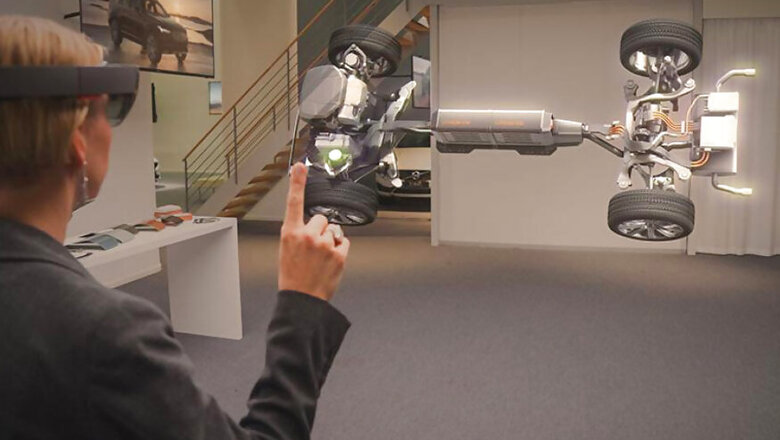
views
In recent months both Volvo and Mercedes have announced development partnerships with Microsoft for exploring automotive uses for HoloLens but soon in-car AR will be the norm.
According to new ABI Research data, within the next decade more than 11 million new cars on the road will boast integrated augmented reality technology while a further 5 million systems will be installed in cars as after-market head up display units.
And this move to AR doesn't mean that it will be easier for drivers to hunt down difficult-to-find Pokémon while on a road trip or have a quick game of "Doom" while the passengers aren't looking.
Instead, it should lead to safer, less distracted, yet more informed driving. Leveraging the full capabilities of AR as part of a head up display will enable the ‘painting' of navigation and safety warning information on a car's windshield -- whether literally highlighting a cyclist that's getting too close or superimposing an arrow on the road ahead to indicate which turn to take.
However, there are challenges that need to be overcome before all of these next-gen tech innovations can realistically become the norm.
"These include how to capture and interpret road geometry through computing intensive sensor fusion, precise vehicle positioning, laser projection, driver monitoring via inward facing cameras, and designing sophisticated algorithms to generate precise augmentation content in the viewing field of the driver," said Dominique Bonte, Managing Director and Vice President at ABI Research.
As cars move towards greater autonomy, the number of sensors and other systems on board will increase dramatically and successfully filtering everything each of these systems is monitoring into useful, timely information for the driver is going to be key.
Get it wrong and the driver could be so overwhelmed and distracted that it's potentially dangerous, especially if things like contextual advertising or social media feeds start flashing up on the windshield.
"It will be critical to use AR sparingly, in a minimalistic way, and only to display relevant, contextual information when needed to improve the driver's perception of the road environment and reducing response times," said Bonte.















Comments
0 comment